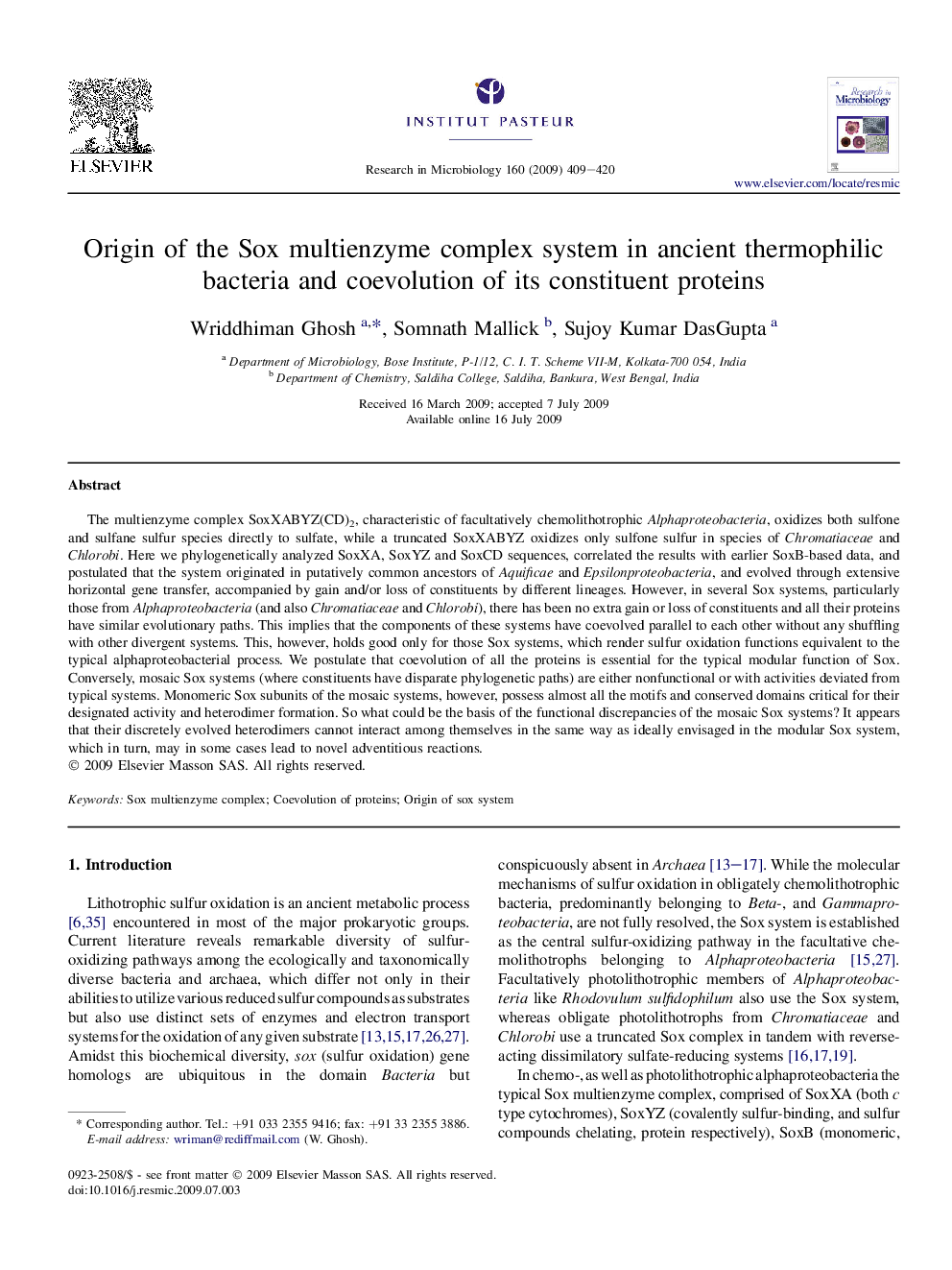| Article ID | Journal | Published Year | Pages | File Type |
|---|---|---|---|---|
| 4359153 | Research in Microbiology | 2009 | 12 Pages |
The multienzyme complex SoxXABYZ(CD)2, characteristic of facultatively chemolithotrophic Alphaproteobacteria, oxidizes both sulfone and sulfane sulfur species directly to sulfate, while a truncated SoxXABYZ oxidizes only sulfone sulfur in species of Chromatiaceae and Chlorobi. Here we phylogenetically analyzed SoxXA, SoxYZ and SoxCD sequences, correlated the results with earlier SoxB-based data, and postulated that the system originated in putatively common ancestors of Aquificae and Epsilonproteobacteria, and evolved through extensive horizontal gene transfer, accompanied by gain and/or loss of constituents by different lineages. However, in several Sox systems, particularly those from Alphaproteobacteria (and also Chromatiaceae and Chlorobi), there has been no extra gain or loss of constituents and all their proteins have similar evolutionary paths. This implies that the components of these systems have coevolved parallel to each other without any shuffling with other divergent systems. This, however, holds good only for those Sox systems, which render sulfur oxidation functions equivalent to the typical alphaproteobacterial process. We postulate that coevolution of all the proteins is essential for the typical modular function of Sox. Conversely, mosaic Sox systems (where constituents have disparate phylogenetic paths) are either nonfunctional or with activities deviated from typical systems. Monomeric Sox subunits of the mosaic systems, however, possess almost all the motifs and conserved domains critical for their designated activity and heterodimer formation. So what could be the basis of the functional discrepancies of the mosaic Sox systems? It appears that their discretely evolved heterodimers cannot interact among themselves in the same way as ideally envisaged in the modular Sox system, which in turn, may in some cases lead to novel adventitious reactions.
